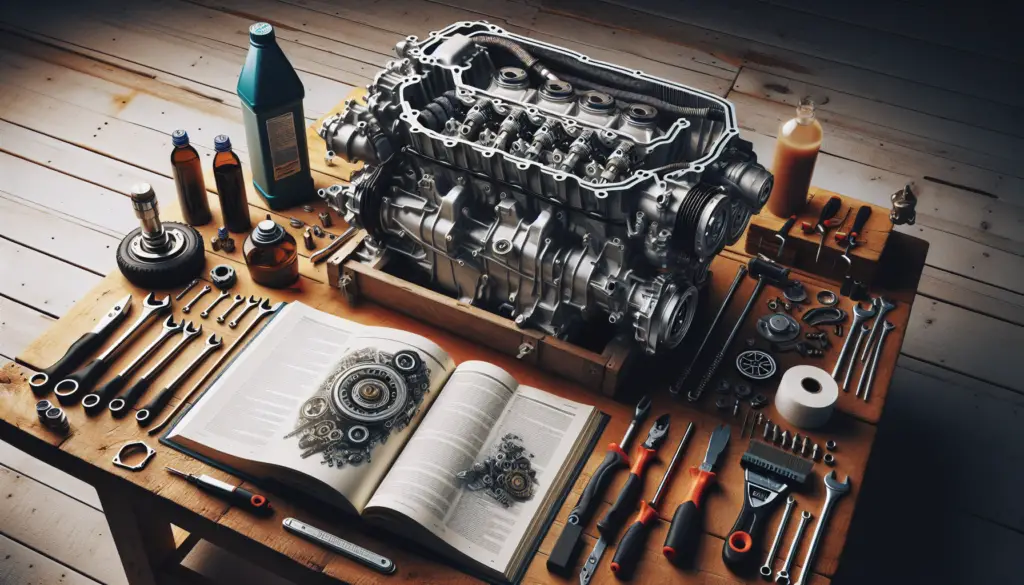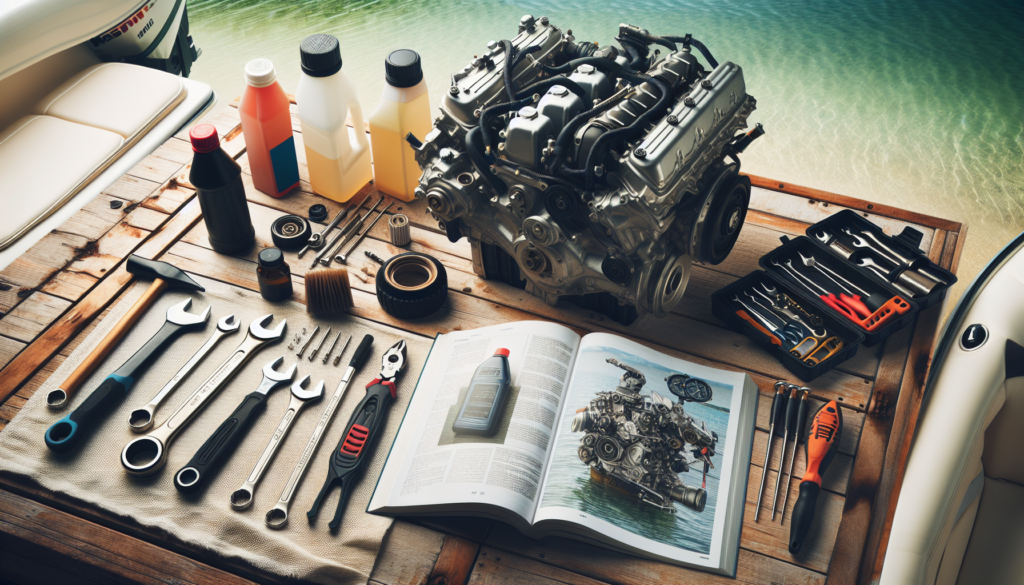Before you embark on sailing under the sun-drenched spring skies, a bit of boat engine preparation is essential. “Key Steps for Boat Engine Spring Preparation” will lay out a practical guide, beginning with the basics to the more advanced measures, all to ensure your boat engine performs at its peak. This piece will explore crucial areas, such as inspection, oil changes, fuel system checks, and battery maintenance. You’re guaranteed a smoother and safety-conscious voyage by following these steps diligently. So don’t turn a blind eye; your ideal sailing experience this spring is just around the corner.
Understanding the Importance of Spring Preparation
Shifting weather conditions, especially coming out of a long winter, can have unexpected effects on your beloved boat’s machinery.
Recognizing seasonal changes effects on boat engines
With the arrival of spring, as the temperatures begin to rise, it’s critical to understand how these changes affect your boat’s engine. Seasonal changes can influence the functioning of the engine, leading to common problems like freezing or drying out of components.
Preventing damage and extending engine life
Spring preparation is all about preventing such seasonal damage to your boat’s engine. Regular and careful maintenance can extend the engine life significantly, saving you from pricey repairs or replacement down the line.
Ensuring safety on the water conditions
More than just a matter of cost, thorough springtime preparation ensures your safety on the water. A well-maintained boat engine decreases the chances of engine failure in the middle of a trip, leaving you stranded or worse.
Visual Inspection of Boat Engine
Before you even turn the key, a visual inspection can tell you a lot about your boat’s engine health.
Checking for external damages
Start by giving the exterior of your engine a once-over. Look out for any visible signs of wear or damage, like cracks in the casing.
Identifying rust and corrosion
Rust and corrosion are not your engine’s friends. If left unchecked, they can severely damage your engine components. Make sure to inspect thoroughly for any rust spots or areas affected by corrosion.
Discovering leaks or drips
Leaks are often the first sign of a larger problem. If you notice any unusual drips or pools of oil or coolant, it’s time for a more indepth investigation.

Cleaning the Engine Components
With the visual inspection done, it’s time to start the actual maintenance process.
Removing dirt and debris
Start by removing any unwanted dirt and debris from your engine. This can range from leaves and dust to old oil and grime.
Applying cleaning agents
use a suitable cleaning agent to effectively remove dirt, oil, and any potential residue. Always follow the instructions to ensure you’re using the product correctly.
Rinsing and drying process
Once cleaning with the agent is done, rinse the engine thoroughly. Be sure to dry it properly after to avoid any moisture causing rust or other issues later on.
Changing Engine Oil and Filters
Regular oil changes are key to keeping a boat engine running smoothly.
Choosing the right oil for your engine
Selecting the right oil is crucial to ensure the smooth operation of your engine. Its viscosity should be suitable for the current temperature and overall conditions.
Changing oil filters
Along with the oil, don’t forget to change the oil filters as well. Regularly changing these filters will keep any contaminating particles from harming your engine.
Proper disposal of old oil
After you’ve changed the oil, don’t just toss it anywhere. It’s important to properly dispose of it to avoid harming the environment.

Checking and Replacing Spark Plugs
Good spark plugs are an integral part of a well-running engine.
Locating the spark plugs
Firstly, you need to locate the spark plugs. They’re typically in a row along one side of the engine.
Assessing condition of spark plugs
Check the condition of the spark plug. Look for rust, oil or carbon deposits on the electrode or insulator and ensure the gap size is correct.
Replacing and reinstalling new spark plugs
If any spark plugs are showing signs of wear, it’s time to replace them. Once the new plugs are installed, make sure they’re fitted correctly for optimal performance.
Inspecting Fuel System
The fuel system is another crucial component to scrutinize during your spring preparations.
Examining fuel lines and connections
Review the fuel lines and connections for leaks or wear. Any loose or damaged connections could lead to fuel leakage and associated fire hazards.
Checking fuel tanks
Inspect the fuel tank for corrosion, leakage or damage, and make sure to fill it with fresh fuel after the winter.
Replacing fuel filters
Just like oil filters, regular replacement of fuel filters is a must to maintain good engine health.
Examining the Cooling System
The cooling system is a key player in maintaining your boat engine’s temperature.
Reviewing the condition of the water pump
A failing water pump could risk overheating your engine. Check the pump for any leaks or wear signs to ensure it can do its job effectively.
Inspecting cooling system hoses
Look at the hoses for cracks, leaks or stiffness. Hoses in poor condition can affect the efficiency of your cooling system.
Performing coolant flush and refill
After checking the system’s integrity, perform a coolant flush. This will rid it of any debris and leftover old coolant. Afterwards, you should refill the system with fresh coolant.
Servicing the Ignition System
Yet another important part of your spring preparation is the ignition system.
Reviewing ignition switches
Check ignition switches for smooth operation. A cracked or worn switch could potentially leave you stranded.
Testing ignition coil
The ignition coil is responsible for starting your engine. A faulty coil could result in a boat that refuses to start, so it’s crucial to ensure it’s in good working order.
Inspecting and replacing distributor cap
Look for any cracks or burns on the distributor cap. If you find it defective, replace it immediately.
Inspecting the Propeller
Last but not least, it’s time to examine your boat propeller.
Checking for visible damages
Check the propeller for chips, dents or noticeable bends. A damaged propeller can cause your boat to vibrate and reduces its efficiency.
Removing and cleaning the propeller
Eventually, remove the propeller and give it a thorough cleaning to remove plant residue, fishing line or other debris caught up in the propeller.
Applying propeller grease and re-installing
Apply a healthy amount of propeller grease to the shaft to prevent corrosion. Once done, re-install the propeller correctly.
Preventing Future Damage
With all your spring preparation done, it’s time to think ahead.
Discussing the importance of regular maintenance
Regular preventative maintenance is your best defense against unwanted problems down the line. Consistent check-ups will keep your engine healthy and ready for your next adventure.
Introducing protective measures
Consider protective measures for your boat engine, like using rust and corrosion inhibitors. They can boost your engine’s protection against damage, essentially extending its life.
Suggesting off-season storage tips
Lastly, don’t forget your boat’s well-being during the off-season. Proper storage during winter can prevent many issues. This includes draining all fluids, topping off tanks, and covering your boat to protect it from dust and moisture.
Remember, regular spring preparation is as much about standing ready for smooth cruising as about being environmentally responsible and safe. Use this essential guide to maintain your boat engine and enjoy countless memorable trips out on the water!

